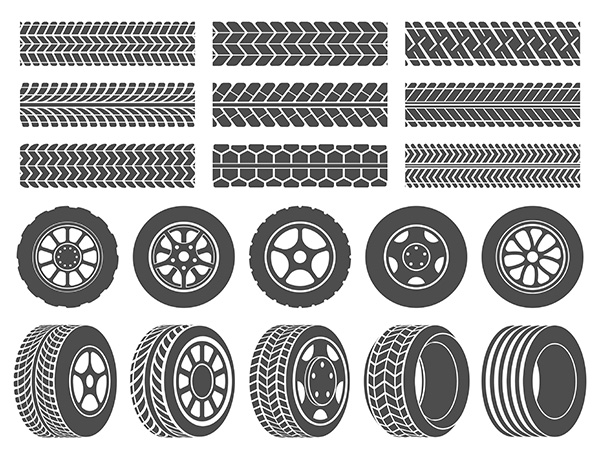
Choosing the right tires for your vehicle is more than just a matter of aesthetics. It's about safety, performance, and comfort. The right tires can enhance your driving experience, improve fuel efficiency, and ensure your vehicle handles well in various conditions. But with so many options on the market, how do you make the right choice? Let's dive into the essential factors to consider when selecting tires for your vehicle.
Understanding Tire Types and Their Purposes
Tires come in various types, each designed for specific driving conditions and vehicle types. Are you mainly driving on highways, in cities, or off-road? Do you live in an area with harsh winters or mild, temperate weather? These questions are crucial in determining the best tires for your needs. For instance, all-season tires are versatile, providing a good balance of handling, mileage, and ride comfort in a variety of conditions. However, if you live in an area with heavy snowfall, winter tires with their specialized tread patterns and rubber compounds will offer better traction and safety.
On the other hand, performance tires are ideal for high-speed stability and improved handling, making them suitable for sports cars. Off-road tires, with their aggressive tread patterns and reinforced sidewalls, are perfect for vehicles frequently navigating rugged terrains. By understanding the types of tires and their purposes, you can narrow down your options significantly.
Considering Tire Size and Specifications
One of the most important aspects of choosing the right tires is ensuring they fit your vehicle correctly. This means paying attention to tire size, load index, and speed rating. You can find this information in your vehicle's owner's manual or on the tire placard located on the driver's side door jamb.
Tire size is typically indicated by a combination of numbers and letters, such as P215/65R15. Each part of this code provides specific information about the tire's dimensions and capabilities. The first part, 'P215,' indicates the tire's width in millimeters. The '65' refers to the aspect ratio, which is the height of the tire's sidewall as a percentage of its width. The 'R' stands for radial construction, and '15' is the diameter of the wheel in inches.
The load index and speed rating are usually found together, such as '95H.' The load index indicates the maximum weight the tire can support, while the speed rating represents the maximum speed the tire can safely handle. Ensuring that your tires meet or exceed the manufacturer's recommendations for load index and speed rating is crucial for maintaining vehicle safety and performance.
Balancing Price and Quality
While it might be tempting to opt for the cheapest option available, it's important to remember that tires are an investment in your safety and driving experience. High-quality tires from reputable brands often offer better performance, durability, and warranty coverage. However, this doesn't mean you have to break the bank.
Consider your driving habits and conditions. If you frequently drive long distances, investing in premium tires might be worth it for the added comfort and fuel efficiency. For city driving, mid-range tires can offer a good balance of performance and cost. Look for sales, rebates, and discounts, and consider purchasing tires in sets to save money. Additionally, online reviews and ratings can provide valuable insights into the real-world performance of different tire models.
The Importance of Proper Maintenance
Once you've chosen the right tires, proper maintenance is key to ensuring they last as long as possible and perform optimally. Regularly check tire pressure, as underinflated or overinflated tires can lead to uneven wear and affect handling and fuel efficiency. Rotate your tires every 6,000 to 8,000 miles to promote even wear, and have your wheel alignment checked periodically.
Keep an eye on tread depth, too. Most tires have tread wear indicators, small raised bars that run across the grooves of the tire. When the tread wears down to these bars, it's time to replace the tires. Driving on bald tires can be extremely dangerous, especially in wet conditions, as it significantly reduces traction.
Making the Final Decision
Choosing the right tires involves a balance of understanding your needs, considering technical specifications, and evaluating your budget. Don't hesitate to consult with a tire professional who can offer expert advice based on your vehicle and driving habits. Remember, the right tires will not only enhance your vehicle's performance but also ensure your safety on the road.
Need help choosing the perfect tires? Visit A Plus Automotive today for expert advice and a wide selection of top brands.